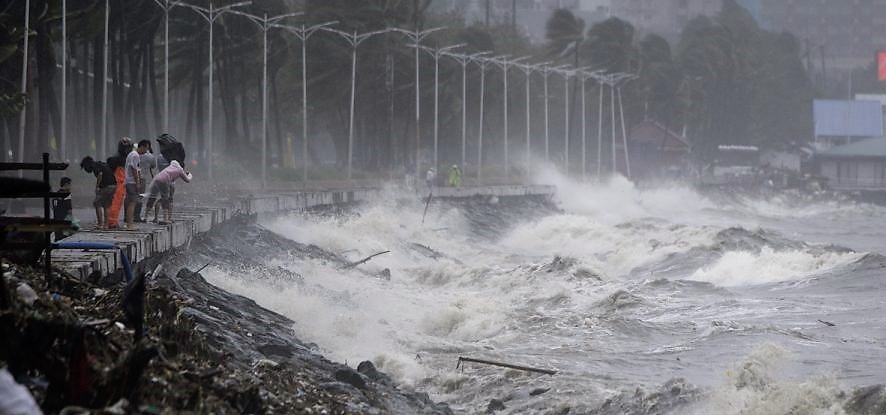Typhoon Mangkhut batters south China
September 17, 2018 | Expert Insights

The world's strongest storm this year, Typhoon Mangkhut, continued its path of destruction across Southeast Asia over the weekend, reaching mainland China on Sunday afternoon after battering Hong Kong and killing dozens in the Philippines.
Background
Typhoon Mangkhut, known in the Philippines as Super Typhoon Ompong and in China as táifēng shānzhú is a powerful tropical cyclone that made landfall in the Philippine province of Cagayan on September 15, 2018.
Mangkhut is the twenty-second tropical storm and the ninth typhoon of the annual typhoon season. At its peak intensity, it was classified as an equivalent to a Category 5 Super Typhoon, making it the strongest tropical cyclone worldwide in 2018. It has impacted Hong Kong and southern China and is expected to dissipate over Northern Vietnam.
Hurricanes are tropical storms that form over the North Atlantic Ocean and Northeast Pacific while cyclones are formed over the South Pacific and Indian Ocean and typhoons are the Northwest Pacific Ocean.
Analysis
A super typhoon has swirled past Hong Kong, barrelling towards the Chinese coast and gaining strength over the South China Sea, after lashing the Philippines and killing at least 29 people.
The storm has carved a deadly trail across the region, killing two people in southern China and at least 54 people in the Philippines. Many of the Philippines' deaths were caused by landslides, with dozens more still believed to be buried beneath the deluge, government officials said at a news conference on Sunday.
As Mangkhut marched toward the Chinese mainland, Hong Kong was also buffeted by fierce winds that tore off roofs, downed trees and caused cranes perched atop half-built skyscrapers to swing ominously. The storm made landfall over China's Guangdong Province, one of China's most populous provinces, at 5 p.m. local time, killing two people, according to state media CCTV. More than 100,000 people have reportedly been evacuated from the area and 3,777 shelters set up. Airports in Shenzhen, a technology hub across the border from Hong Kong, and on the resort island of Hainan also cancelled all flights.
Mangkhut is now expected to move inland to western Guangdong. While the storm has weakened, a T8 warning was still in place into Sunday evening - meaning that winds with speeds of about 63 kmph were expected. Guangdong is on its highest alert for the storm, which also hit Hong Kong, where it swayed skyscrapers and blew out windows.
The death toll from the Philippines has now risen to at least 59. Most died in landslides caused by heavy rain. Mangkhut considered the strongest storm of 2018, ploughed through the northern Philippines on Saturday. Winds of 173 kmph and gusts of up to 223 kmph were reported, stronger than Hurricane Florence that hit North Carolina over the weekend. There were no reported deaths in Hong Kong, a city well prepared for tropical cyclones.
More than 2.45 million people have been relocated, and authorities there issued their highest warning level, a red alert.
In Hong Kong, authorities also issued their maximum alert, with residents warned to stay indoors to avoid flying debris. Winds there reportedly reached more than 110 mph. Officials put the number of injured at more than 200 but the territory avoided the worst of the storm.
Water levels surged by almost 3.5 m in certain places and live fish were washed on to the streets. Preparation and evacuation procedures have improved since Super Typhoon Haiyan in 2013 which killed more than 7,000 people. Warnings were issued, travel was restricted, schools shut and the army was put on standby in advance.
Assessment
Our assessment is that for countries like the Philippines, the impact will be severe on agriculture – threatening staples like rice and corn. We believe only a fifth of the produce has been harvested so far. We feel that the storm is likely to cause high humanitarian impact based on the storm strength and on the fact that as many as 43 million people have been exposed to Manghkhuts cyclonic winds. We also believe that the biggest risk factor will be the storm surge and landslides.








Comments